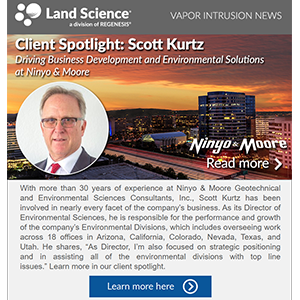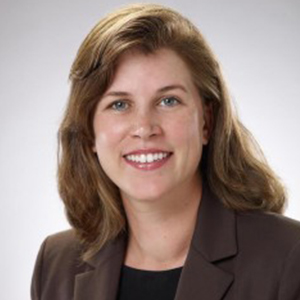November 2020 Land Science Newsletter
|
November 2020 Land Science Newsletter
5 Reasons to Consider a Preemptive Vapor Barrier to Protect Your Property InvestmentHistorically, easily-punctured thin-mil plastic sheets or inflexible and difficult-to-seal High Density Polyethylene (HDPE) Barriers were the only option for vapor mitigation at large warehouses or sites where regulatory requirements were not a driving risk factor. These solutions offered either chemical resistance or constructability, but not both. Composed of an innovative, metalized-film, MonoShield sets the standard for preventing diffusion and permeation of chemical vapors. Its nitrile-based asphalt latex ensures a seal far more effective and easier to apply than tape-based or heat-welded systems. Download the ebook to learn more.
|
October 2020 Land Science Newsletter
|
REGENESIS Expands U.S. Manufacturing and Distribution Operations
SAN CLEMENTE, Calif.–(BUSINESS WIRE)–REGENESIS, the recognized leader in soil and groundwater remediation solutions and vapor intrusion mitigation technologies, is proud to announce it has expanded its operations to include a new state-of-the-art manufacturing and distribution warehouse strategically located outside of Nashville, Tenn. Enhancing the production and warehousing of its Land Science division’s full-suite of vapor mitigation technologies and REGENESIS’ soil and groundwater remediation solutions offers clients greater flexibility, while providing improved control over delivery times due to the facility’s central location.
“REGENESIS and Land Science have established a reputation for going above and beyond in the service of our clients”
The facility spans six acres and offers 70,000 square feet of office, lab and warehousing space. REGENESIS is investing significant time and money in retrofitting the former brownfield site (which previously housed a wire manufacturing operation) with the latest in temperature-controlled storage, a QA/QC lab and milling capabilities, among other key features. In addition, REGENESIS is committed to improving the site with green initiatives that include reforesting the land.
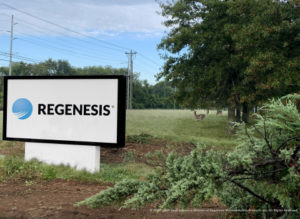 “Keeping pace with demand for our popular and effective environmental solutions made the decision to expand a simple one,” Scott Wilson, president and CEO of REGENESIS and Land Science, explains. “Our clients have come to expect exceptional service and proven results and we believe the new facility positions us well for continued growth and future demand. Plus, this new facility’s central location will allow us to reach two-thirds of the U.S. population within two days.”
“Keeping pace with demand for our popular and effective environmental solutions made the decision to expand a simple one,” Scott Wilson, president and CEO of REGENESIS and Land Science, explains. “Our clients have come to expect exceptional service and proven results and we believe the new facility positions us well for continued growth and future demand. Plus, this new facility’s central location will allow us to reach two-thirds of the U.S. population within two days.”
The expansion is also a response to the growing market for Land Science’s technologies. In just the last year, Land Science, the industry leader in vapor intrusion mitigation solutions, announced a new and greatly improved suite of vapor barrier systems that offer up to 100 times the chemical resistance of other barrier systems on the market. The new products address a wide spectrum of sites and offer the safest and most-effective vapor barrier solutions currently available. More than five million square feet have been installed to date.
REGENESIS’ popular PlumeStop micron-scale activated carbon technology designed to inhibit the spread of contaminant plumes has also driven the need to expand. PlumeStop is the only in situ amendment effectively addressing PFAS risk. It can be applied under low-pressure injection, which solves the problem of excessive costs incurred with pump and treat systems. Through the use of a proprietary organic polymer dispersion chemistry, the activated carbon achieves high distribution through the subsurface and removes contaminants like PFAS rapidly from groundwater.
Committed to delivering the safest, most effective remediation solutions on the market, REGENESIS is dedicated to ensuring on-time delivery and quality control, while continuing to push the envelope on improving performance and ease of installation across its environmental solutions. Its new cutting-edge manufacturing and distribution facility reflects its commitment to excellence.
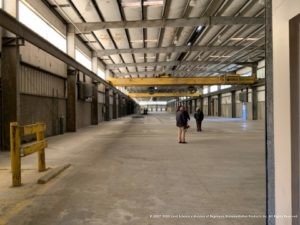 “REGENESIS and Land Science have established a reputation for going above and beyond in the service of our clients,” concludes Wilson. “Our commitment to developing groundbreaking environmental solutions is unparalleled in the industry and we are excited about the next chapter in our company’s history.”
“REGENESIS and Land Science have established a reputation for going above and beyond in the service of our clients,” concludes Wilson. “Our commitment to developing groundbreaking environmental solutions is unparalleled in the industry and we are excited about the next chapter in our company’s history.”
For more information about Land Science’s full line of vapor barrier systems, please visit www.landsciencetech.com or reach out to your regional technical representative. For more information about PlumeStop and how it is effectively addressing PFAS, go to www.pfastreatment.org.
ABOUT REGENESIS and LAND SCIENCE: Founded in 1994, REGENESIS is an expert provider of in situ soil, groundwater and vapor intrusion remediation products and services. Land Science, a division of REGENESIS, offers a full line of vapor intrusion mitigation technologies and is the safe and effective choice for leading engineering, construction and environmental consulting firms serving a broad range of clients, including developers, insurance companies, manufacturers, municipalities, regulatory agencies and federal, state and local governments.
©2020 All rights reserved. PlumeStop, Land Science, and TerraShield, are registered trademarks of Regenesis Bioremediation Products Inc.
September 2020 Land Science Newsletter
|
August 2020 Land Science Newsletter
|
|
|||||||||||||||
|
|||||||||||||||
|
July 2020 Land Science Newsletter
Ben Alter, Senior Vice President and Principal of GZA GeoEnvironmental, Inc., a leading environmental engineering and consulting services firm, has amassed a deep reservoir of applied experience, which includes 22 years at GZA, as well as authoring books about the fundamentals of environmental consulting. With a role at GZA that includes meeting prospective clients, entering into contracts with them, and then overseeing that the contracts are executed properly, Alter is in many ways contributing to help sustain our environment, while also impacting the future success of GZA.
|
||||||||||||||||||||
|
||||||||||||||||||||
|
June 2020 Land Science Newsletter
For Greg Page, Senior Engineer with Environmental Consulting & Technology, Inc. (ECT), working as a team to solve challenging environmental issues is a daily reminder of why he chose to pursue a career in bioremediation. He shares, “To partner with a client as a team versus just being a hired vendor is very satisfying. A true partnership facilitates a thorough understanding of stakeholder objectives, the ultimate end use of the property, and knowing the community impact leads to effective evaluation of remedial technologies so that the proposed application solves the right problem.” Learn more in our client spotlight.
|
||||||||||||||
|
||||||||||||||
|
May 2020 Land Science Newsletter
With more than 30 years of experience at Ninyo & Moore Geotechnical and Environmental Sciences Consultants, Inc., Scott Kurtz has been involved in nearly every facet of the company’s business. As its Director of Environmental Sciences, he is responsible for the performance and growth of the company’s Environmental Divisions, which includes overseeing work across 18 offices in Arizona, California, Colorado, Nevada, Texas, and Utah. He shares, “As Director, I’m also focused on strategic positioning and in assisting all of the environmental divisions with top line issues.” Learn more in our client spotlight.
|
|||||||||||||||||
|
|||||||||||||||||
|
Client Spotlight: Denise Sullivan, Principal and Owner of Urban Green Environmental, LLC
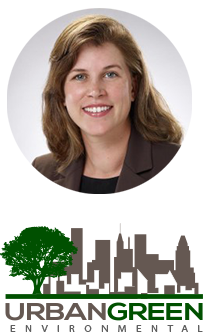 Ask Denise Sullivan, Principal and Owner of Urban Green Environmental, LLC, an environmental consulting and engineering firm and valued Land Science® client, about how she chose a career in environmental remediation and you’re likely to get the response, “Well, my career chose me.” That’s because Sullivan, upon graduation from Tufts University, where she earned her BS in Civil Engineering, found that most of the jobs readily available were in the environmental market, predominantly investigating and remediating properties for environmental impacts and contamination. She shares, “I needed a job, and at the time I never would have guessed that I would find my passion for my career in that first job. My first position was at a company, Ensol, Inc. in Billerica, Massachusetts. It was a small firm, much like Urban Green Environmental, which I started in 2007, and I have modeled much of our internal culture at Urban Green Environmental based on my early experiences at Ensol.” Becoming an entrepreneur and starting her own business targeting the environmental sciences had always been a dream for Sullivan as a way to own and grow her own company while also giving back to the environment. She says her success is based upon nurturing a strong entrepreneurial spirit and choosing a field that she is passionate about. She continues, “I have dedicated my career to the environmental field and have worked hard to carve out a niche where my firm can successfully balance environmental goals with economic development. My proudest accomplishment as a business owner is the team of committed individuals that comprise Urban Green. In 2007, despite the challenging economic climate, I felt the time was right to invest in myself, my adopted hometown of Baltimore, and establish a niche firm focused on environmental investigations of Brownfields and urban in-fill properties. When I started, I was a one-person company and operated out of my home. Today, Urban Green has six employees, an expanding office in Locust Point, and a clear mission and vision.”
Ask Denise Sullivan, Principal and Owner of Urban Green Environmental, LLC, an environmental consulting and engineering firm and valued Land Science® client, about how she chose a career in environmental remediation and you’re likely to get the response, “Well, my career chose me.” That’s because Sullivan, upon graduation from Tufts University, where she earned her BS in Civil Engineering, found that most of the jobs readily available were in the environmental market, predominantly investigating and remediating properties for environmental impacts and contamination. She shares, “I needed a job, and at the time I never would have guessed that I would find my passion for my career in that first job. My first position was at a company, Ensol, Inc. in Billerica, Massachusetts. It was a small firm, much like Urban Green Environmental, which I started in 2007, and I have modeled much of our internal culture at Urban Green Environmental based on my early experiences at Ensol.” Becoming an entrepreneur and starting her own business targeting the environmental sciences had always been a dream for Sullivan as a way to own and grow her own company while also giving back to the environment. She says her success is based upon nurturing a strong entrepreneurial spirit and choosing a field that she is passionate about. She continues, “I have dedicated my career to the environmental field and have worked hard to carve out a niche where my firm can successfully balance environmental goals with economic development. My proudest accomplishment as a business owner is the team of committed individuals that comprise Urban Green. In 2007, despite the challenging economic climate, I felt the time was right to invest in myself, my adopted hometown of Baltimore, and establish a niche firm focused on environmental investigations of Brownfields and urban in-fill properties. When I started, I was a one-person company and operated out of my home. Today, Urban Green has six employees, an expanding office in Locust Point, and a clear mission and vision.”
When asked about working with Land Science®, Sullivan feels the range of products offer important solutions towards successful project completion for their clients. “We have several projects in Baltimore City that employ the use of Land Science® vapor barriers,” she says. “Specifically, Geo-Seal® and Retro-Coat™. It is rare to have a project in our Maryland Department of the Environment Voluntary Cleanup Program, particularly in an urban environment such as Baltimore City, where we do not spec a vapor barrier with proven resistance to volatile organic compounds, known as VOCs. Retro-Coat™ has been a critical product for many of our projects, and we have used it with great success on some of our current projects.” As one would expect, staying current in an ever-changing industry can have its challenges, so Sullivan regularly attends the National Brownfields conference as well as local Brownfield conferences to stay abreast of the latest trends and technology. When asked about the future goals of Urban Green Environmental, she emphasizes the company’s need to remain focused on providing current solutions for successful outcomes. She shares, “Our mission is to investigate properties for environmental liabilities and provide solutions to those liabilities for private and public organizations and institutions. We have a wide array of clients in the public, private and non-profit sectors and are excited about the future of the company.”
Recently married for the first time and residing in Baltimore, MD, Sullivan’s husband also plays a key role in Urban Green Environmental’s success. She continues, “I’m married to a wonderful Frenchman, Sylvain Masset, who is also an engineer with a focus in the air testing equipment industry (ATI). His expertise has been invaluable over the past few years as Urban Green has developed diagnostic testing protocols for our vapor mitigation systems.” Outside of work, they enjoy hiking on weekends, and she hopes to one day build a new home with her “talented husband.” She also finds time to serve as a member of the Advisory Board for The Baltimore Center for Sustainable Careers (BCSC), a project of Civic Works, Baltimore’s non-profit service corp. In addition, she volunteers as an instructor for the B’more Green Brownfields Training Program, a workforce development program. “Since 2004, I have provided classroom instruction for future environmental field technicians, and I’ve also hired two graduates from this training program.” When asked about the most challenging aspect of her work, Sullivan points to the need to work effectively with people, yet stresses this can also be rewarding as well. She continues, “For me, working with people in general is the most challenging and the most rewarding. I believe our best efforts come from a team, and I find myself awed and so very lucky at the team that has been attracted to Urban Green. They work so hard and are extremely dedicated.”
As the environmental remediation industry continues to evolve, Sullivan sees potential for continued growth and development, particularly in soil and demolition materials, as well as vapor intrusion and mitigation. She shares, “Other than the investigation and remediation of PFOAs, which it seems most in our industry are tracking closely, I think we’ll continue to see progress in densely developed urban areas and on brownfields, along with emerging trends for the re-use of soil and demolition materials (concrete, brick, etc.) and vapor intrusion/mitigation.” And what advice would she give to others who might be considering a career in environment remediation? She concludes, “That’s an interesting question and one that is difficult for me to answer. I would encourage folks who are curious about Brownfields or contaminated properties who want to make an impact on the future of our environment to get involved early on and nurture their curiosity by exploring the various career paths that are out there.”
Land Science® is proud to have Denise Sullivan, Principal and Owner of Urban Green Environmental, LLC as a valued client and partner in vapor intrusion mitigation, and appreciates her diverse experience and knowledge base in providing successful remediation outcomes for Land Science® and its clients.



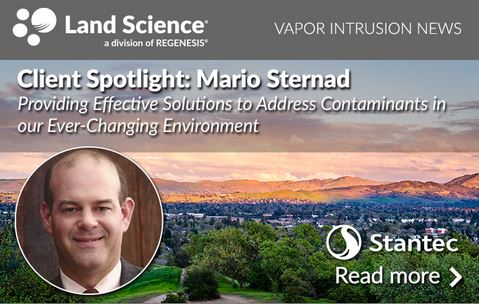
















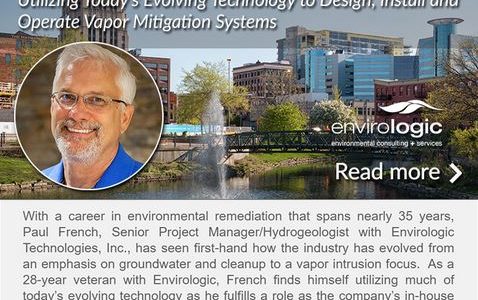


 A large automotive and supply company planned to build its new corporate headquarters on a 4.5-acre brownfield site recently acquired in Southfield, MI. Soil and groundwater sampling on the property revealed the presence of trichloroethylene (TCE) and polynuclear aromatic hydrocarbons (PAHs). TCE was also identified in soil gas beneath the site. Within the footprint of the planned building itself, contaminant concentrations were found to be in excess of applicable indoor air quality screening levels. Recognizing the unique characteristics of the site as well as the significant levels of contamination present,
A large automotive and supply company planned to build its new corporate headquarters on a 4.5-acre brownfield site recently acquired in Southfield, MI. Soil and groundwater sampling on the property revealed the presence of trichloroethylene (TCE) and polynuclear aromatic hydrocarbons (PAHs). TCE was also identified in soil gas beneath the site. Within the footprint of the planned building itself, contaminant concentrations were found to be in excess of applicable indoor air quality screening levels. Recognizing the unique characteristics of the site as well as the significant levels of contamination present, 



 Nitra-Seal® is a new advanced nitrile composite barrier system. It represents an update/improvement on current vapor barrier systems. An acknowledged weakness in these systems is in the penetration and perimeter termination locations, where spray-applied core material composed of Styrene-Butadiene Rubber (SBR) latex/asphalt is used. Nitra-Seal offers a substantial upgrade as it employs a more chemically resistant nitrile latex instead of the more susceptible SBR latex. Nitra-Seal is a composite system creating the ideal blend between constructability and chemical resistance by using both high density polyethylene (HDPE) and nitrile-advanced, spray-applied asphalt core. Learn more and download the product brochure below.
Nitra-Seal® is a new advanced nitrile composite barrier system. It represents an update/improvement on current vapor barrier systems. An acknowledged weakness in these systems is in the penetration and perimeter termination locations, where spray-applied core material composed of Styrene-Butadiene Rubber (SBR) latex/asphalt is used. Nitra-Seal offers a substantial upgrade as it employs a more chemically resistant nitrile latex instead of the more susceptible SBR latex. Nitra-Seal is a composite system creating the ideal blend between constructability and chemical resistance by using both high density polyethylene (HDPE) and nitrile-advanced, spray-applied asphalt core. Learn more and download the product brochure below.

 Scott Wilson
Scott Wilson Ryan Miller
Ryan Miller


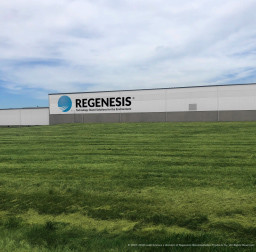
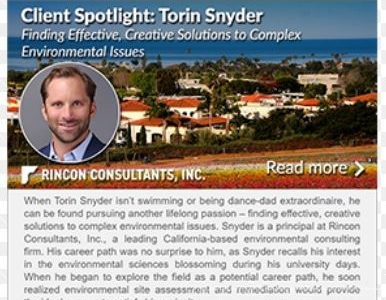
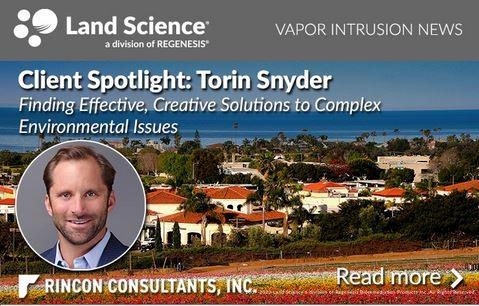





 This vapor intrusion mitigation case study produced in partnership with
This vapor intrusion mitigation case study produced in partnership with 
 Nitra-Seal™ is a new advanced nitrile composite barrier system. It represents an update/improvement on current vapor barrier systems. An acknowledged weakness in these systems is in the penetration and perimeter termination locations, where spray-applied core material composed of Styrene-Butadiene (SB) latex/ asphalt is used. Nitra-Seal offers a substantial upgrade as it employs a more chemically resistant nitrile latex instead of the more susceptible SB latex. Nitra-Seal is a composite system creating the ideal blend between constructability and chemical resistance by using both high density polyethylene (HDPE) and nitrile-advanced, spray-applied asphalt core. Learn more and download the product brochure below.
Nitra-Seal™ is a new advanced nitrile composite barrier system. It represents an update/improvement on current vapor barrier systems. An acknowledged weakness in these systems is in the penetration and perimeter termination locations, where spray-applied core material composed of Styrene-Butadiene (SB) latex/ asphalt is used. Nitra-Seal offers a substantial upgrade as it employs a more chemically resistant nitrile latex instead of the more susceptible SB latex. Nitra-Seal is a composite system creating the ideal blend between constructability and chemical resistance by using both high density polyethylene (HDPE) and nitrile-advanced, spray-applied asphalt core. Learn more and download the product brochure below.
 Mark Quimby
Mark Quimby

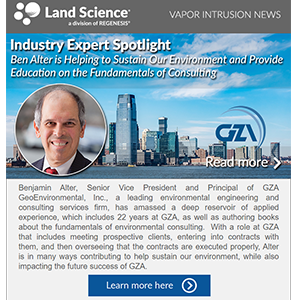





 This video shows a time lapse of a MonoShield application by S&H Waterproofing and Construction. MonoShield is a chemically resistant and easy-to-apply barrier specifically designed as a preemptive solution for vapor intrusion at brownfield redevelopment sites. It is backed by unparalleled design support, standard industry warranty, and a network of certified applicators who can ensure quality installation.
This video shows a time lapse of a MonoShield application by S&H Waterproofing and Construction. MonoShield is a chemically resistant and easy-to-apply barrier specifically designed as a preemptive solution for vapor intrusion at brownfield redevelopment sites. It is backed by unparalleled design support, standard industry warranty, and a network of certified applicators who can ensure quality installation.

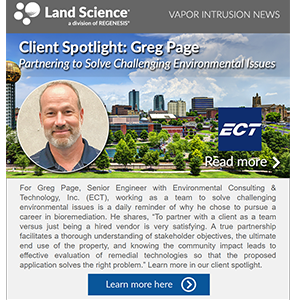



 Hieu Nguyen
Hieu Nguyen

